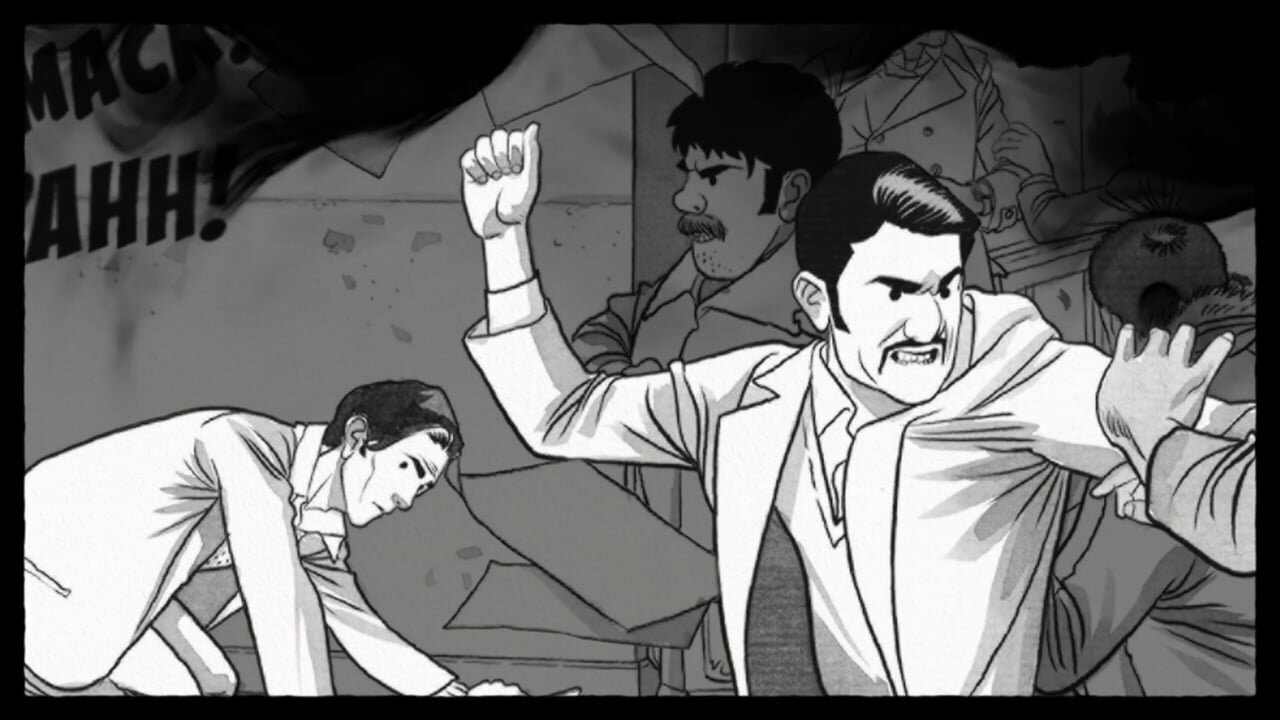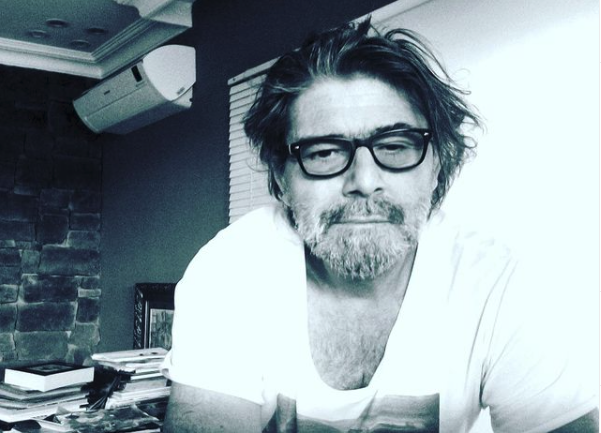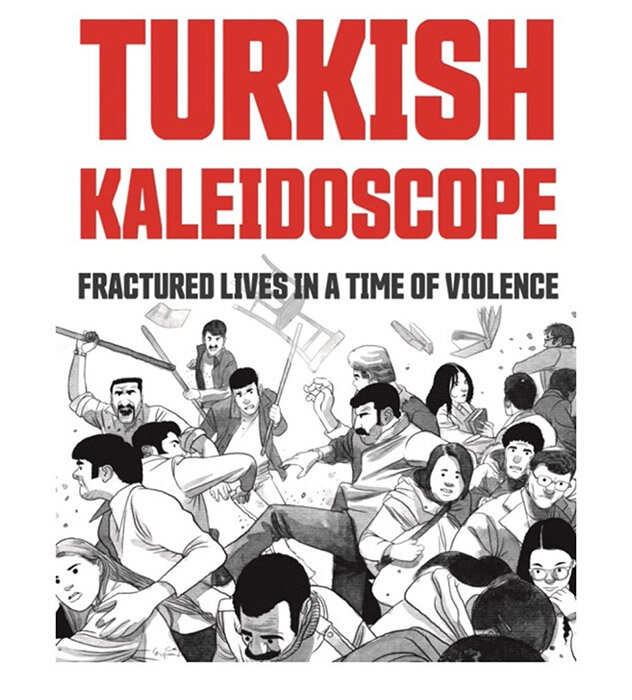
In which the author of a graphic novel describes the process of working with an illustrator to create a book that traces Turkey’s descent into political violence in the 1970s, through the experiences of four students on opposing sides of the conflict.
Jenny White
It started out as a straight-forward research project, an oral history of Turkey in the 1970s, a time of great upheaval and violence. As I flattened the vivid stories told to me during the interviews into scholarly analysis, I wondered whether there was another way to get my analytical observations across while retaining the vividness of the stories — perhaps in graphic form. Then the saga began: find the money, find an artist, learn an entirely different way of writing so that the artist knows what to draw, and package ideas in a way that makes a reader want to keep turning pages. Below, I share with you the (to me) surprising technicalities and intricate process of writing a scholarly graphic novel.
I first arrived in Turkey as a young MA student in 1975 in Ankara, the capital, in the middle of a vicious civil war. There were bombings, gunfights, and street battles across the country. Between 1976 and 1980, 5,000 civilians were killed in street violence between the left and the right. The left had split into numerous groups that often shot at each other. Bystanders were caught in the middle. Twice I stumbled into a hail of bullets while walking past a cafe or a door on campus that suddenly flew open. One day, I learned that even school buses were segregated, when some fellow riders pulled a young man from his seat, hit him on the head with a hammer, and pushed him out of the rolling vehicle. The passengers then sang merry fascist songs all the way downtown. At the national level, there were dueling government ministries, parallel police forces and a failing economy.
I left with my degree in 1978. A coup d’état in 1980 replaced street violence with state violence that brutally repressed activists, particularly on the left. Three years later, the military allowed new elections. The civilian government that came to power opened Turkey’s closed economy to the global market and new consumer products and hopes for upward mobility preoccupied Turkey’s population. Amnesia about the 1970s set in and little was written about the period until very recently.
I returned to the U.S. and earned a PhD in social anthropology, specializing in contemporary Turkish society and politics. This led to further years of living in Turkey as I carried out a variety of research projects and published several scholarly books, none of them about the 1970s. In between, in an act of nostalgia for the lost civilities of the Ottoman Empire, I wrote three historical novels set in 1880s Istanbul. My most recent book, Turkish Kaleidoscope, required the skills of both genres. A graphic book, it is set in Ankara in the 1970s and follows four medical students as they become involved in violent political activism on opposing sides. It’s an exploration of memory and place from the perspective of everyday lives, rather than an account of the main actors, ideological factions, or metrics of social change.
This project, like others before it, began with applications for research grants to support a trip to Turkey to carry out interviews, mostly in Turkish. Stockholm University Institute for Turkish Studies invited me to visit for a sabbatical and underwrote the research. I carried out 32 oral histories in Turkey with a wide range of people: left/right/nonaligned, male/female, activist/bystander, Muslim/non-Muslim, Turk/Kurd, student, factory owner, and so on. This triangulation produced a rich and textured picture of the period, a history from below. When doing the interviews, I had no specific agenda, though I discouraged any discussion of ideology. I allowed myself to be surprised by people’s stories and motivations. People’s memories of the time were vivid and what I recorded were fascinating, poignant coming-of-age stories and turning points in their lives. Often they seemed to relive their experiences in the telling. They clearly thought that this was an important story that no one had asked about before.
As with my previous research, I analyzed the interviews but noticed that my analysis flattened the stories as it folded them into discussions of abstract issues, like factionalism. I wondered whether there was some way to make the same points, but retain the exceptional quality of the stories and the nuances and contradictions they contained.

We analyze data and build models to try to explain the origins of factionalism and descent into political violence, but the reality always involves complexities of real actors negotiating cultural, social and historical pressures. I wanted to capture that. My editor at Princeton University Press encouraged me to write a graphic book and sent me proofs of two serious graphic books they were publishing. It was an intriguing idea. I’m a fan of Art Spiegelman, Joe Sacco and Jason Lutes, and had myself used Persepolis, Marjane Satrapi’s graphic account of her childhood during the Iranian Revolution, to teach classes about the Middle East. I had read Özge Samancı’s book, Dare to Disappoint, a graphic account of her childhood in Turkey. The problem was that I couldn’t draw.
This led to another round of grant proposals to pay an artist for the extensive amount of time needed to illustrate a book-length manuscript. I had moved permanently to Sweden by this time and was awarded a grant by the Riksbankens Jubileumsfond that allowed me to go ahead. I thought that the book should be drawn by a Turkish artist who could capture the nuances of the society and who could remember the 1970s, which looked very different from today, without becoming ensnared in the politics, that is, who wouldn’t balk at being asked to represent both right and left sympathetically. Through a mutual friend, I was introduced to Ergűn Gűndűz, a highly experienced and talented artist who was sensitive to these nuances and could evoke Turkey in the 1970s (when he was a teenager). We met for lunch and I was impressed by his professionalism as well as the broad range of styles he had mastered. Once we agreed to work together, I sent photos and descriptions to Istanbul and he sent back sketches to me in Stockholm. He developed a distinctive style for this book.
The process of writing a graphic book, though, was new to me. Drawing on my background as a novelist as well as anthropologist, I combined ethnography, memoir and life history with techniques of storytelling and dialogue more commonly used in writing fiction. I sent Ergűn an 80-page single-spaced “storyboard.” His response was puzzlement: “I can’t draw what’s in people’s heads.”
Thus began my education in writing a proper storyboard which, in the end, looked very much like a stripped-down screenplay. Therein lies the challenge: You must embed all of your ideas and data in brief speech bubbles, explanatory boxes, or action. Over a year and a half, I traveled back and forth to Istanbul, spending almost two months in total, discussing every word, every scene, every character with Ergűn, who would sketch as we spoke. Then he turned his sketches into graphic art and send me the pages to Stockholm, which I would edit and send back in round after round. On my last visit, just before Covid hit, we spent twelve hours in his studio, eating on our feet, to get the final edits done. There is an amazing amount of detail, both visual and textual. Just before publication, I realized that one of the characters sported a mustache on one page, but not on the other. Incredibly, we had missed that. The production was a team effort, with different experts copyediting, setting the text electronically on a separate layer in the file containing the drawings, and color editing. Princeton created a cool promotional video and a colleague and I developed a freely available annotated Spotify playlist of Turkish songs from the 1970s. A Turkish colleague in the U.S. wrote to tell me that the songs had made him cry.
Turkish Kaleidoscope lays out the personal motivations and actions of a variety of ordinary people who were directly or indirectly involved in rightist and leftist activism in the 1970s, focusing particularly on four main characters, two on the left and two on the right. The characters and their stories are merged and fictionalized to create a dramatic arc. (I had told the people I interviewed that their stories might be merged and anonymized and they had agreed to that.) Though none of the people I interviewed knew each other, linking the characters in the book creates a powerful narrative that engages readers, regardless of familiarity with the setting or historical context, which is given in a short written introduction. Some of the scenes are from my own experience, but most of the stories are taken from the interviews. The anonymous readers for Princeton University Press provided practical suggestions for tightening up the format, including how to systematically mark the beginning of each new section, point of view, time and location.
We see the characters in their youth. We witness how they are initiated into violent group activity in various ways — unwillingly, by accident, in consequence of reading a book, influenced by friends, or because they hold certain beliefs or emotions. The characters struggle to find their own path through the thicket of ideological approaches and groups. Once associated with a group, the internal hierarchical mechanism takes over and the group becomes the person’s life. Love and sexuality are tightly circumscribed, both on the left and the right. Some of the characters have an experience, seemingly trivial, that causes their lives to veer in a different direction. Objects can have a talismanic power: a misplaced poster, a book, T-shirt, or telescope on the roof. If they decide to leave, breaking away from a political group is fraught with physical danger. Violence is ubiquitous, random, brutal and often an expression of members’ masculinity, rather than any particular ideology. The book moves through the decade from 1970 to 1980, incorporating several (though not all) of the major political events that affected the characters, including the 1980 coup d’état and its aftermath. Since the period of the 1970s was a dark period in many ways and the air was heavily polluted, the book is drawn in gray tones and sepia, except where a major character is introduced and the artist uses the red of spilled blood.
The Princeton readers wanted us to bring the book up to the present, so two of the characters meet again by chance decades later and catch up on what has happened to them. The scenes set in the present are drawn in full color. We gave the main characters children, partly in order to avoid directly depicting any currently politically sensitive topics. In the descriptive text that accompanies the children, I have tried to bring into their lives all the social and global changes that would have affected them after 1980. Two of the children appear in a sketch of the 2013 Gezi Park protests. At this point, the book was officially designated to be “fiction.”
“I believe that graphic books work because they invite the reader to incorporate their own experiences in the mental process of “figuring it out.” By contrast, a scholarly analysis figures it out for the reader, who follows along, but rarely steps far off the prepared path.”
To my surprise, I found that the graphic approach allows the inclusion of a fuller spectrum of the variables that provide a context for factionalism (including gender and social class) and brings these variables into conversation with each other. This ideally allows the reader to grasp underlying social and political patterns and draw conclusions about their relevance to today’s polarized society and the potential for inter-group violence. The book was used in a U.S. college classroom and I was able to read the student evaluations and speak with the students via Zoom. (A teacher’s review of the book will appear in an upcoming RoMES issue on pedagogy.) I was thrilled and also moved to find that the students made connections to their own lives. Using the January 6, 2021 attack on the U.S. Capitol as an example, one student said it made him think about the distance between disagreement and violence, what had to happen to get from one to the other. Another student said that the book spoke to her because her values differed from those of other students on campus and she felt uncomfortable. An Iraqi student said that what he saw in the book was exactly what was going on in Iraq. I believe that graphic books work because they invite the reader to incorporate their own experiences in the mental process of “figuring it out.” By contrast, a scholarly analysis figures it out for the reader, who follows along, but rarely steps far off the prepared path.
I hope with this book to advance critical thinking about the multiple roots of social violence and to present complex motivations in a creative form that is able to convey both complexity and depth. It wasn’t my intent to create an official account of the 1970s. None of the voices in the text, my own included, are assumed to be reliable narrators. What readers get instead is a multi-layered and continually transforming conversation among disparate voices. Turkish Kaleidoscope asks universal questions about what causes people to sacrifice themselves for an autocratic leader, to engage in violent acts, and to split off from that cause or leader. What effect do their actions have on their own lives and those of their children? The graphic format allows the reader to ask these questions of themselves as well and helps guide them to possible answers. The suspicion lingers that graphics dumb down content and ideas, but I found that the opposite is true, that analyses can become more sophisticated and effective if readers are given permission to participate.




